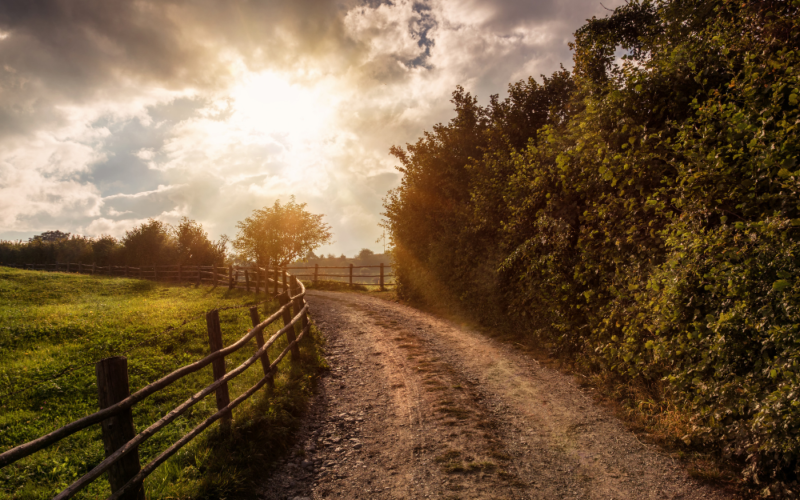At various stages of our personal evolution, life in us assumes different forms making us different in some sense. It happens because at various stages of life we embody different impulses and the continuity of our life ensures that each phase leaves a mark on the ones that succeed it.
For instance there is a wide gulf between childhood and adolescence and the ideas that we held dear in childhood, we are not even prepared to own as we grow older. This is so because change is the essence of our existence and consciousness and that’s why we cannot tamper with the ideas once held by our previous ‘selves’. Every expression, that is accurate and sincere, is true in relation to the self it reflects. Only the expression emanating from the depth of our being can bring out the vital attributes of our ‘self’. As Thomas Traherne explained, enjoyment of the external world is not possible until one feels it as an integral part of one’s being. The perception of externality of objects arises because the ‘self’ in us has not, yet, become one with Nature. As Montaigne says for each of his essays, “it is myself that I portray”. This makes all higher art an autobiography of the spirit. No wonder, profound artistic impulse creates an expression that can be appreciated universally whereas shallow-art remains the domain of mere specialists. Great art can be enjoyed by each one of us because its delivery transcends the subjective limitations of the artist’s personality.The first step in our achieving objectivity is our complete absorption in the object of our attention. As Ali ibn Abu Talib explained, the more we descend deep into ourselves the more we are in consonance with Nature as the process of interiorization leads us to the comprehension of Nature’s mysteries. A stage then comes when we, like Einstein, appear as external to ourselves – reaching a state where we are both conscious and aware of being conscious. Thus the contemplation of external objects helps in internal growth. The Quran (like other religious scriptures) also says that you will find God in yourself and in the signs of Nature. As Tennyson claims in the lines quoted below from his poem “Flower in the Crannied Wall” the comprehension of a small flower can lead us to understanding God and Man.
“Flower in the crannied wall
I pluck you out of the crannies
I hold you here root and all, in my hand
Little flower—but if I could understand you
What you are, root and all, and all in all
I should know what God and man is.”
All creative activity brings about a union of the object and subject, a marriage between Man and Nature. Every cognition is creation. The universal everywhere is reflected in the particular. In Man’s soul does the nature fulfil herself. Creative art shows that Nature has been provided with a mirror in Man’s heart in which she appears even more beautiful. Man recreates the data provided by sense perception in his own image and transforms it through his imagination. A great poet, like Ghalib, transforms the familiar world, heightening the beauty of the world that helps us to perceive more of the significance of creation. As Wilde explains, Nature is always imitating art, perpetually creating things and men in art’s image.
For those who seek to travel on the path of Truth, physical is the symbol of spiritual, serving as a bridge between here and ‘beyond’. When a human shuts himself within the limits of his own organism, he robs himself of the capacity to pass beyond his subjective limitations –to enter into and enjoy that which is not him- then he becomes a mere animal conscious only of the impulses that things stir in him. I often feel as if some Divine Power hides the Truth from the eyes of the vulgar and impure. Artists merely exploit the mediums of expression –colour, sound, body etc.- to bring out their deepest intuition in the realm of manifestation. Arts is the expression of the capacity to enter into the existence of the other and to be absorbed in it. When the artist loses himself in the reality that which he depicts, he effaces himself but his work becomes a spontaneous expression of himself. This spontaneity is objective in terms of the reality of the object that absorbs him. This helps understand what Jesus meant when he said: “He that saveth his life shall lose it, and he that loseth his life shall keep it unto life eternal.” When we block the avenues of outpouring of self, we withdraw from the reality of world -reducing ourselves to mere instincts, habits, and inclinations- and surrender our freedom and creative spontaneity. The artist does not act by the compulsion of rules but by the nature of the reality which he captures. He feels himself to be a tool in the service of the creative impulse in him.
Our existence can be compared to an iceberg; only a fraction of it perceptible to our consciousness and the rest of it hidden in a thick hazy blanket of instinctive life. Hence, the highest attainment which anyone of us is capable of is to awaken the sleeping being each one of us is harbouring within him. The process of awakening starts from a shift in emphasis from the lower to the higher being, as if to lift the iceberg to detach it from its moorings. There is no set prescription to achieving self-awakening. In the past people looked up to spiritual guides to progress on this path. With the liberation of the intellect in the modern world, we now have to rely more on our own inner resources. The age of prophets and Messiahs is gone, the higher intellect places the responsibility on the individual to change the level of his own life and give its energy a direction and a meaning. This can be achieved today by deepening one’s consciousness by integrating life’s diverse impulses under the sovereignty of our ‘self’. By living consciously we can acquire the ability to see more into things than we can do by inhabiting a superficial layer of our consciousness.

While it is necessary to open the eyes to see the light, unless there is light the opening of eyes will achieve nothing. The two must converge on a single focus in order to discover its truth. In short, the journey of human life is a journey of becoming, our ‘self’ keeps changing whether or not we consciously try and influence this change. Awakening is what transforms this constant change into evolution. It requires constant focus, effort, and sacrifice and is not just the chattering luxury for those blessed with personal security and idle time. I will end with quoting the great English poet Coleridge who states this truth eloquently when he says:
“O Lady! We receive but what we give,
And in our life alone does Nature live:
Ours is her wedding-garment, ours her shroud!
And would we aught behold, of higher worth
Than that inanimate cold world, allowed
To the poor loveless, ever-anxious crowd,
Ah! From the soul itself must issue forth
A light, a glory, a fair luminous cloud
Enveloping the earth—
And from the soul itself must there be sent
A sweet and potent voice, of its own birth, Of all sweet sounds the life and element.”







